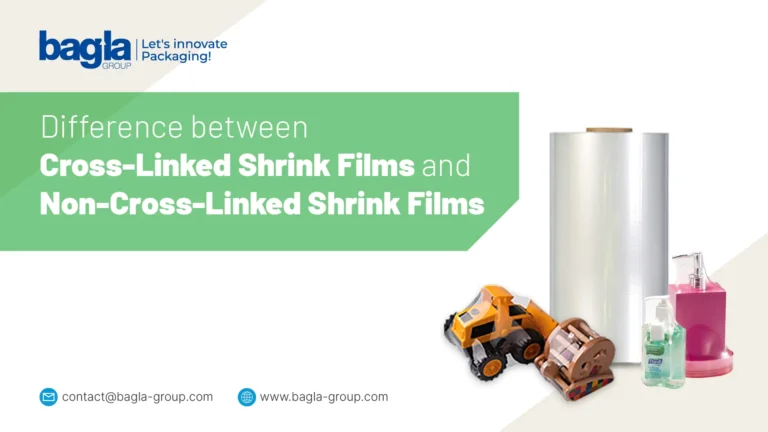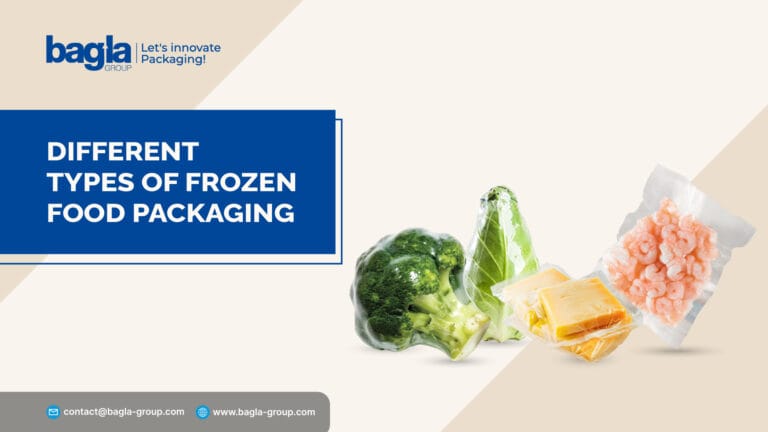In the modern world, words like safety, convenience, and sustainability are on the minds of consumers and manufacturers when they talk about product packaging. This is particularly true in the realm of food packaging. Flexible packaging film is becoming the packaging option of choice based on its convenience, outside food will be protected from contamination, and food will have an extended shelf life.
This article will summarize flexible packaging commonly used for food storage and also offer some benefits & various materials used.
What Is Flexible Packaging?
Flexible packaging is a process of packaging items using non-rigid materials to achieve cost savings and variable formats. It is a newer method of packaging and has gained popularity due to its efficiency and cost-effectiveness.
Reasons Why Flexible Packaging Commonly Used for Food Storage?
Flexible packaging is rapidly becoming a popular option in the food packaging market because of all the benefits that each flexible packaging component provides to both the consumer and the industry. Here are the benefits:
- Freshness: Flexible packaging provides a barrier to air, moisture, and light to maintain the quality and taste of the food for as long as possible.
- Convenience: Flexible packaging material is lightweight and easy to prepare for storage and transportation, which saves time and money.
- Cost-Effective: Flexible packaging is lighter- it uses less material to fabricate and ship the product, and it uses less energy to produce.
- Efficient: Flexible packaging is more efficient on the store shelf or while shipping than rigid packaging.
- Durable: Flexible packaging appears to be able to fight against leaking and contamination while protecting products from damage while in a shipping state.
- Customizable: Flexible packaging can generally be made in almost any shape and printed in many ways according to the product specifications or branding.
- Sustainable: Flexible packaging often is designed to be recyclable as well as compostable or biodegradable.
- User Friendly: Depending on the use/application of the product, the ease-of-use and usability, and functionality at the end-of-use can be improved with flexible packaging.
Types of Flexible Packaging Commonly Used For Food Storage
Different types of materials are used in flexible packaging depending on the food product and desired shelf life:
| Material | Properties | Common Applications |
|---|---|---|
| BOPP (Biaxially Oriented Polypropylene) | Moisture resistance, clarity, and strength | Snacks, chips, confectionery |
| PET (Polyethylene Terephthalate) | Heat resistance, toughness | Sauces, beverages, retort pouches |
| PE (Polyethylene) | Flexibility, sealability | Frozen foods, dairy, and grains |
| Aluminum Foil Laminates | Light and oxygen barrier | Coffee, dry foods, instant meals |
| Paper Laminates | Eco-friendly, printable | Bakery, tea bags, organic snacks |
Why Bagla Group Is The Best Choice For Flexible Packaging?
Bagla Group is a leading packaging film manufacturer that has built a dependable brand for the packaging industry, specializing in new and developing innovative, high-quality, and sustainable solutions for every need in the food packaging industry.
- Trusted Leader: With years of expertise in producing dependable, effective, flexible packaging films.
- Modern Technology: Recently designed machinery and processes using cutting-edge technology in film manufacturing for optimal output.
- Custom Packaging Solutions: Suppliers of custom designs to fulfill unique product requirements and branding development needs.
- Sustainability: The broadest selection of sustainable, recyclable, or compostable packaging is focused on.
- Quality Assurance: Quality checks to ensure all products are fit for purpose and meet the safety and performance requirements of international standards.
- Affordable & Efficient: The most affordable pricing in the industry, and reduces material waste while lowering overall packaging costs.
- Worldwide Support: Supporting manufacturers’ needs internationally with consistent quality, on-time shipping, and reliable support.
Conclusion
Flexible packaging offers an amazing balance among the four major traits of food packaging today. From a premade food perspective, it maintains safety and freshness and provides the consumer with a portable packaging style of the plastic container that matches environmental sustainability practices as well.
When thinking about snack and beverage items, frozen food, and dairy, flexible packaging is a disruptive innovation. The reason for more science around flexible packaging commonly used for food storage is that they are more flexible, recyclable, and sustainable.
From a food production perspective, if increasing sustainability and packaging efficacy are goals, flexible packaging is the most clear and advanced option.
FAQs
What Are The Advantages Of Flexible Packaging for Food Storage?
Flexible packaging is the type of material that maintains the quality and taste of the food for a longer time by protecting it from oxygen, moisture, and light.
Is Flexible Packaging Good For The Environment?
Yes, flexible packaging is environmentally friendly, as it is made from recyclable materials and can be decomposed.
What Are The Common Foods In Flexible Packaging?
Common foods in flexible packaging forms may include snack foods, dairy products, frozen foods, prepared meals and sides, sauces, and pet food.
Is Flexible Packaging Reducing Food Waste?
Flexible packaging commonly used for food storage helps to maximize food shelf-life, minimizes spoilage of food while in transit, and helps minimize food waste risk due to contamination.


